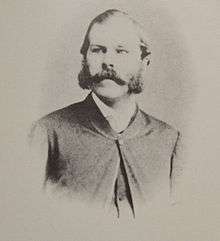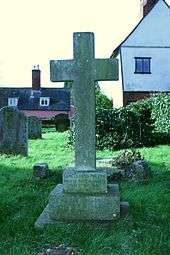Stoke-by-Nayland
| Stoke-by-Nayland | |
 Stoke-by-Nayland |
|
 Stoke-by-Nayland |
|
| Population | 682 (2011) |
|---|---|
| OS grid reference | TL986360 |
| Civil parish | Stoke-by-Nayland |
| District | Babergh |
| Shire county | Suffolk |
| Region | East |
| Country | England |
| Sovereign state | United Kingdom |
| Post town | COLCHESTER |
| Postcode district | CO6 |
| Dialling code | 01206 |
| Police | Suffolk |
| Fire | Suffolk |
| Ambulance | East of England |
| EU Parliament | East of England |
| UK Parliament | South Suffolk |
| Website | Stoke-by-Nayland Parish Council |
Coordinates: 51°59′15″N 0°53′30″E / 51.98755°N 0.89171°E
Stoke-by-Nayland is a village and civil parish in Suffolk, England, close to the border with Essex. The village, located within Babergh district, contains many cottages and timber framed houses and all surround a large recreation field. Once the site of a monastery, the population of the civil parish at the 2001 census was 703, falling to 682 at the Census 2011.[1]
History
The 1868 National Gazetteer of Great Britain describes the village such. "STOKE-BY-NAYLAND, a parish in the hundred of Babergh, county Suffolk, 1½ mile N.E. of Nayland, and 5 miles E. of Bures railway station. Colchester is its post town. The village, which was formerly a market town, is situated near the river Stour. The parish contains the chapelry of Leavenheath, and had a monastery endowed by the Saxon Earl of Algar, traces of which are still existing. The living is a vicarage in the diocese of Ely, value £278. The church, dedicated to St. Mary, is an ancient structure, with a tower and six bells. There is also a district church at Leavenheath, the living of which is a perpetual curacy, value £56. The parochial charities produce about £25 per annum, exclusive of some almshouses. £8 go towards Lady Windsor's hospital. There is a National school for both sexes. Tendring Hall is the principal residence."
St Mary's Church was rebuilt in the fifteenth century, and renovated in 1865. The church is on the site of a 10th-century minster.[2] A Saxon monastery was founded here during the time of King Edmund by Earl Alfgar, who died in 948.[3] The church appears several times in John Constable's paintings, though not always in the right place. The most notable feature is the red-brick tower; completed about 1470 and surmounted by stone spires, the buttresses are laced with canopied image niches. On the north side there is a Tudor porch, but the south porch, the main entrance, was entirely refaced by the Victorians. However, the windows and corbels reveal it to be one of the earliest parts of the church, an early 14th-century addition of two storeys to the building that was then replaced in the late 15th century.
Stoke by Nayland's many listed buildings consist mainly of Grade II houses and cottages, mostly timber-framed and rendered with plain-tile roofs, although some are thatched or slated.
Thorington Hall in a separate hamlet to the south-east of the village is a 17th-century timber-framed and plastered house with much original detail. There are cross wings at the north-east and south-west ends, and a staircase wing rises to above eaves level on the south-east front. The north-east wing has a jettied gable on both fronts, carved bressummer and bargeboards. The south-west wing has an oriel window on the upper storey on the north-west side, on 4 shaped brackets. There is also a jettied gable with carved bressummer and bargeboards. The windows are mostly mullioned and transomed casements with leaded lights, some with the original 17th-century fastenings. There are some original windows, blocked. On the south-east front there is a modern glazed door with an 18th-century doorcase with a scroll pediment on brackets. There are 2 heavy chimney stacks, one particularly fine with 6 grouped octagonal shafts.
Downs Farmhouse, no longer used as such, dates from the early 16th century, with later extensions. It is timber-framed and rendered; with rear extensions partly faced in 19th-century red brick. Of two storeys and on a 3 cell plan, its roofs are plain-tiled with the original chimney-stack set externally on the rear wall of the hall, and a cross entry. The stack has been rebuilt in plain red brick.
Street House is in Church Street and has a plain-tile roof above timber-framed construction hidden behind a render finish.
The Maltings, backing onto the churchyard, and the Old Guildhall, facing it across the road, both have exposed timber-framing and jettied fronts very much designed to be seen. Both these buildings are of four bays divided into tenements.
Amenities
Stoke-by-Nayland contains three schools, one primary, Stoke by Nayland Primary School, and one independent school, Focus School. The village hall was established in 1911 as the Stoke by Nayland Institute. Now a registered charity the hall is now a general meeting place and hosts variety of events. Stoke By Nayland Hotel Golf and Spa is home to a golf course with two 18 hole courses. The club hosts two international PGA Tour events; the Senior Tour[4] since 2006 and the EuroPro Tour[5] since 2004.
Cherry Wood is a Community Woodland in the village, purchased in 2001 by an elected steering group for the benefit of the local community and as a resource for local schools. The group has adopted a code of practice, which includes no spraying, using and developing local skills and planting locally indigenous species wherever possible.
 A Robin in Cherry Wood
A Robin in Cherry Wood
Transport
The village is served by buses connecting it to Hadleigh, Polstead, Langham, Colchester, Ipswich, Sudbury, Leavenheath, and Great Horkesley.
Notable persons with connections to Stoke by Nayland
William Songer who travelled to Nelson, New Zealand on the Whitby as Captain Arthur Wakefield's servant, was born in the village of Stoke-by-Nayland, and suggested naming the township in New Zealand after his birthplace.

Charles Obins Torlesse (1825 – 14 November 1866) was born in Stoke-by-Nayland and was a prominent surveyor for the Canterbury Association in Canterbury, New Zealand. He returned to England due to ill health and died in 1866. He is buried in Stoke-by-Nayland.[6]
Sir William Tendring was the son of Sir William Tendring, Lord of the Manor of Tendring Hall at Stoke-by-Nayland, and Margaret, the daughter of Sir William Kerdiston of Claxton, Norfolk. He married Katherine, the daughter of William Mylde of Clare, Suffolk, and the widow of Sir Thomas Clopton of Long Melford, and succeeded to the lordship of Tendring Hall and other manors on the death of his father in 1375. The couple had one child, Alice, a great heiress, who in 1398 married Sir John Howard and later carried the manor to the Howard family. Their grandson, Sir John Howard, the first Howard to become Duke of Norfolk, married c1442 Katherine Molyns, commemorated by a sixteenth-century brass in St Marys church. She and Sir John eventually became the grandparents of two queens, Ann Boleyn and Katherine Howard. Sir William Tendring died in 1408; his wife in 1402.
Rowley Baronets Rear-Admiral Sir Joshua Rowley, 1st Baronet (1 May 1734 – 26 February 1790) was a Royal Navy officer. Rowley was the eldest son of Admiral of the Fleet William Rowley and the uncle of Sir Josias Rowley. In 1786 he was created a Baronet, of Tendring Hall Stoke by Nayland in the County of Suffolk. His fourth son Charles was an Admiral in the Royal Navy and was created a Baronet in his own right in 1836.
Joshua Francis Rowley, local politician and public servant: born 31 December 1920; Deputy Secretary, National Trust 1952–55; succeeded 1962 as seventh Bt; chairman, West Suffolk County Council 1971–74; vice-chairman, Suffolk County Council 1974–76, chairman 1976–78; Vice Lord-Lieutenant of Suffolk 1973–78, Lord-Lieutenant 1978–94; married 1959 The Hon Celia Monckton (one daughter); died Hadleigh, Suffolk 21 February 1997.
Charles Gerald Brocklebank was born on 21 March 1893. He was the son of Reverend Charles Henry Brocklebank and Isabel Katherine Webster. He married Beatrice Gresley Madan, daughter of Falconer Madan, on 22 April 1925. Charles Gerald Brocklebank fought in the First World War, where he was mentioned in despatches. He gained the rank of Captain in the service of the Royal Engineers and decorated with the award of Médaille militaire. He also received the Military Cross (M.C.)
Lady Ann Windsor married Henry Lord Windsor of Bradenham son of Edward Lord Windsor and Catherine daughter of John Earl of Oxford. Henry Lord Windsor died in 1605, aged c43. Lady Anne Windsor died 1615 and is buried in St. Marys Church.
Æthelflæd of Damerham Æthelflæd, known as Æthelflæd of Damerham was the second wife of King Edmund I of England.
David Hicks was perhaps the "Dyvid Byley" of interior designers: the only exponent of that profession the man in the street might be able to put a name to. For nearly 40 years Hicks has been a household word and his style a touchstone of good, mad, but never indifferent, taste. He was educated at Charterhouse School, followed by an obligatory stint in the Army which determined him to be his own master, and he enrolled in the Central School of Art and Design in London. This led to contact with advertising agencies and photographers such as Terence Donovan, for whom he would frequently "and brilliantly" decorate sets. His first of what was to be a series of ravishing country houses, was the Temple at Stoke-by-Nayland, which he had often bicycled past as a child. Here he created his first decors, devised his first garden (the long dark canal before the Temple's facade would feature frequently in his own and clients' landscapes), gave his first parties and invited his first friends. (d. 1998) Obituary, The Independent.
Ralph Agas (or Radulph Agas) (c. 1540 – 26 November 1621), English land surveyor, was born at Stoke-by-Nayland, Suffolk, about 1540, and entered upon the practice of his profession in 1566.
Sir William Capell, son of John Capell, held the office of Alderman of London and the office of Lord Mayor of London from 1503 to 1504 and 1509 to 1510.
Thomas St Lawrence, 11th Baron Howth (Earl of Howth) lived at Stoke by Nayland. He succeeded to the title of 11th Baron Howth in 1643.
George Webb (cricketer, born 1857)
Beryl Cook, OBE (1926 – 2008), English artist best known for her original and instantly recognisable paintings.
Pictures of Stoke by Nayland
 St Marys Church
St Marys Church The East Window
The East Window The West Window
The West Window St Marys Church Churchyard
St Marys Church Churchyard St Marys Church
St Marys Church St Marys Church, from the West
St Marys Church, from the West Cherry Wood Community Woodland
Cherry Wood Community Woodland Cherry Wood Community Woodland
Cherry Wood Community Woodland School Street (formerly Back Lane)
School Street (formerly Back Lane) Headstone of Charles Obins Torlesse
Headstone of Charles Obins Torlesse Headstone of Charles Obins Torlesse
Headstone of Charles Obins Torlesse Headstone of Charles Martin Torlesse
Headstone of Charles Martin Torlesse
References
- ↑ "Civil Parish population 2011". Retrieved 13 September 2015.
- ↑ "National Monument Record for St Mary's Church".
- ↑ "National Monument Record for Saxon Monastery".
- ↑ European Senior Tour
- ↑ Europro Tour
- ↑ "Charles Torlesse – 1825–1866". Waimakariri District Libraries. Retrieved 13 October 2012.
External links
| Wikimedia Commons has media related to Stoke-by-Nayland. |